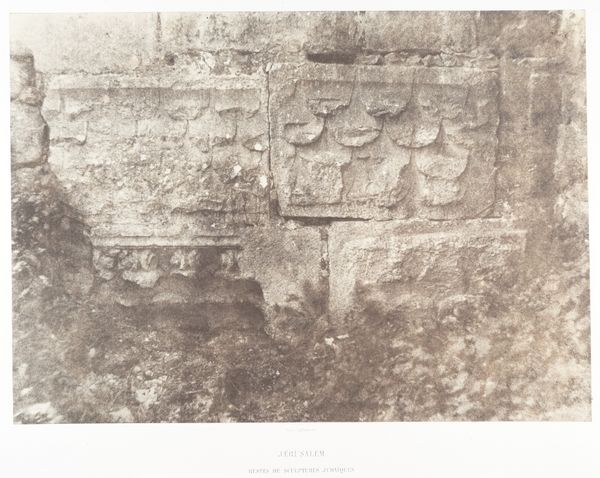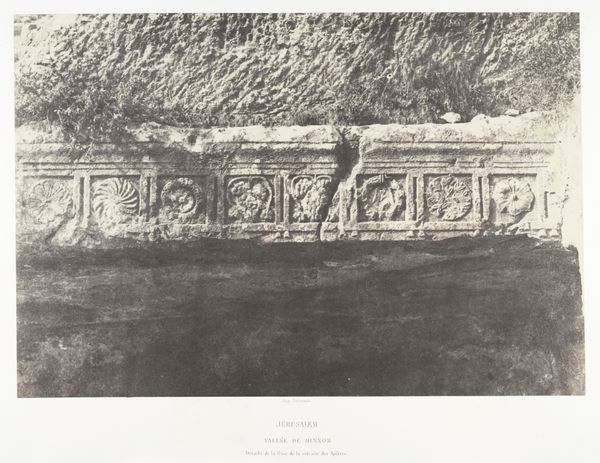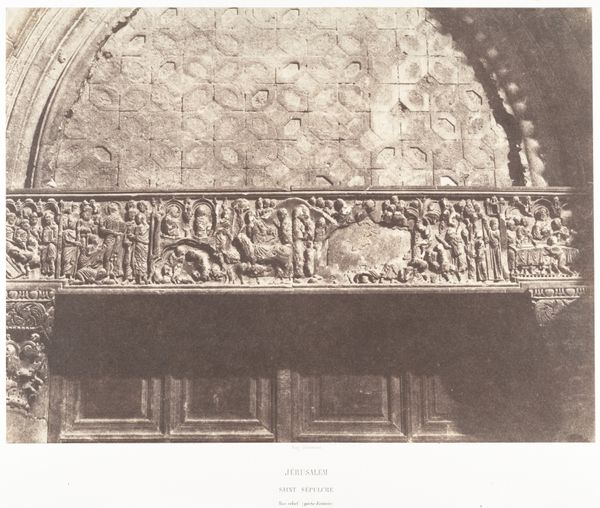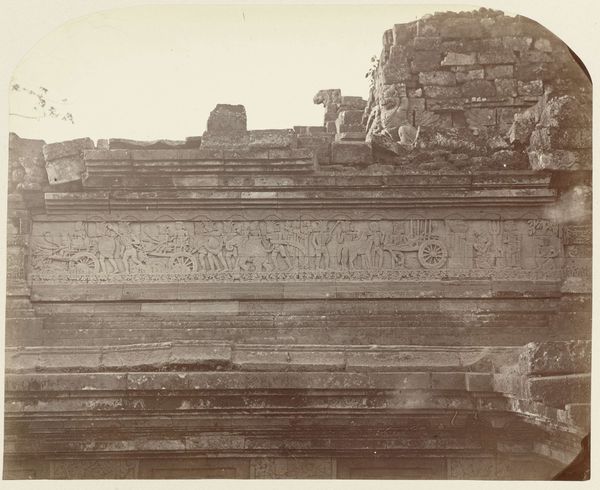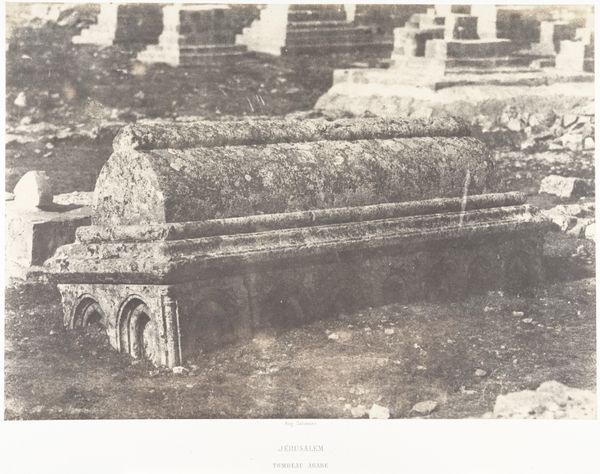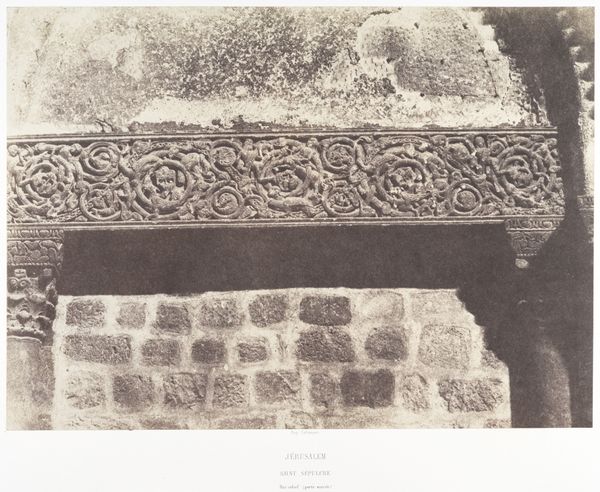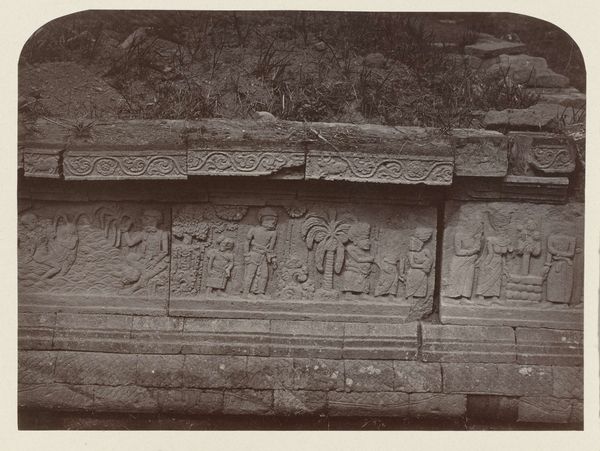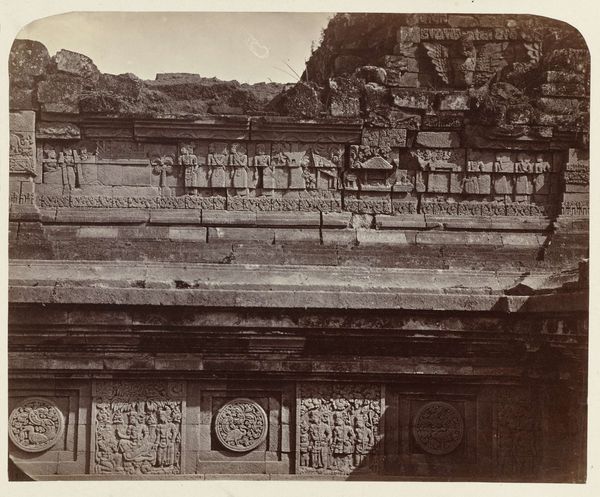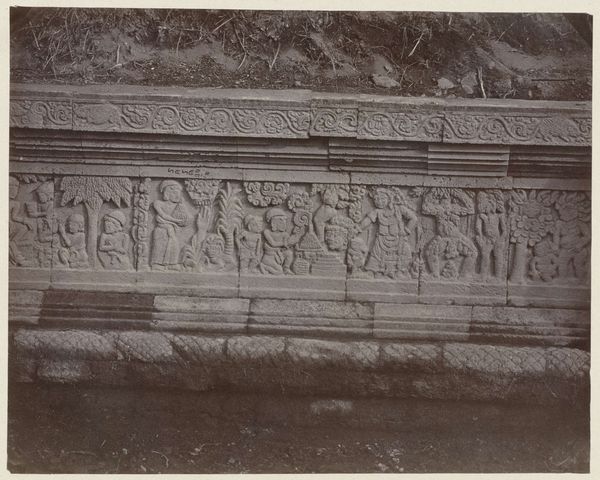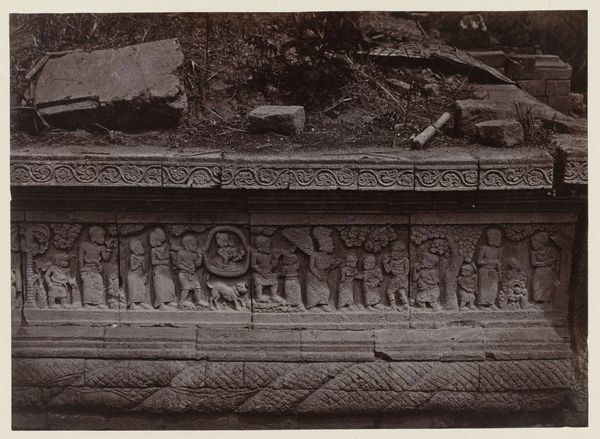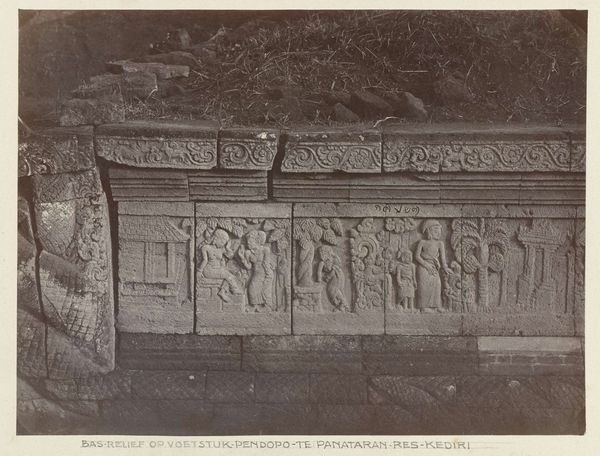
Jérusalem, Tombeau des rois de Juda, Frise supérieure et centrale 1854 - 1859
0:00
0:00
print, photography, architecture
# print
#
landscape
#
photography
#
ancient-mediterranean
#
architecture
Dimensions: Image: 23.2 x 32.2 cm (9 1/8 x 12 11/16 in.) Mount: 44.5 x 59.7 cm (17 1/2 x 23 1/2 in.)
Copyright: Public Domain
Auguste Salzmann’s photograph captures the upper and central friezes of the Tomb of the Kings in Jerusalem. Here, the stone carvings of wreaths are dominant symbols, evoking notions of victory and eternal life, deeply rooted in classical antiquity. These wreaths, emblems of honor, resurface repeatedly in Roman art, adorning the brows of emperors and athletes alike. Yet, their presence here, far from Rome, speaks to a persistent visual language, crossing geographical and temporal boundaries. The wreath, initially a marker of triumph, becomes intertwined with funereal rites, signifying the deceased’s ultimate victory over death, a potent psychological comfort against mortality. Consider how such symbols traverse history, adapting and absorbing new cultural meanings, from the laurel wreaths of ancient Greece to their echoes in Christian iconography. This photograph is not merely a document but a testament to the enduring power of symbols, which continue to engage our collective memory and subconscious.
Comments
No comments
Be the first to comment and join the conversation on the ultimate creative platform.
